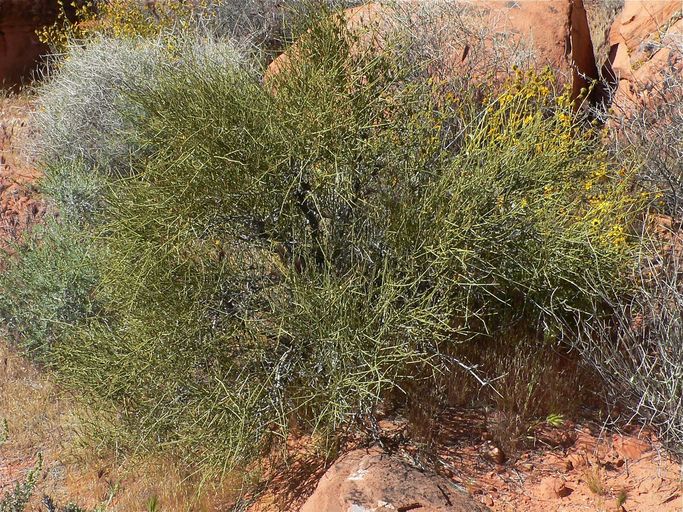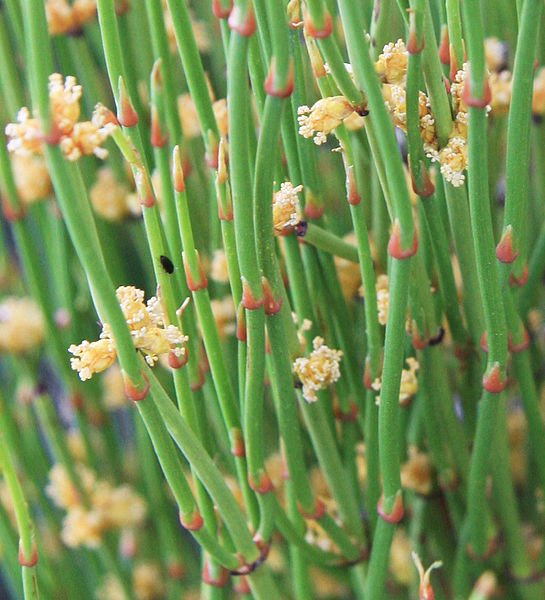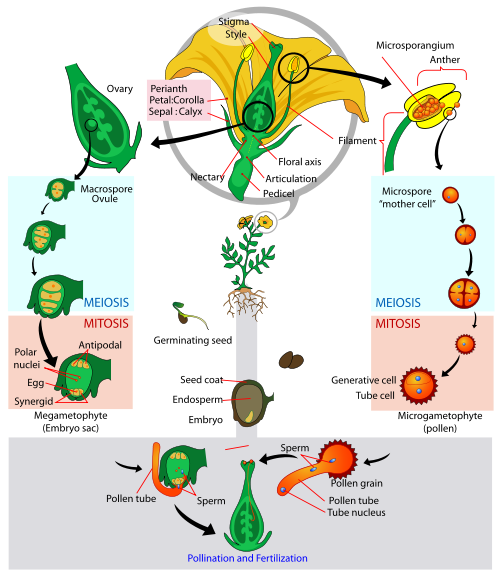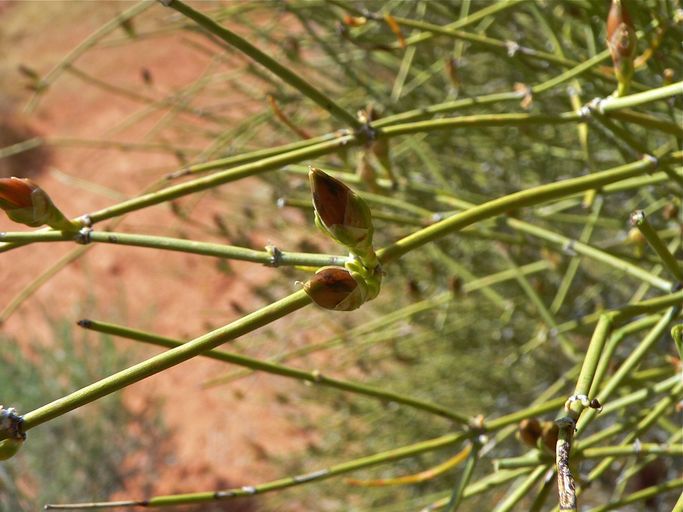Reproduction
When it comes to reproduction, Ephedra viridis has a very complex reproductive cycle. The plant is dioecious, meaning that male and femle reproductive parts occur on different plants. The main structure involved in reproduction are the brightly colored cones that appear on the plants. When plants reproduce, they undergo an alternation of generations where there is a diploid sporophyte and a haploid gametophyte. The lifecycle of Ephedra viridis is similar to that of other plants. A sample lifecycle can be seen below. However, this is the lifecycle of an angiosperm and Ephedra viridis is a gymnosperm (although gnetales are thought to be the link between conifers and angiosperms), so there are some differences to note. The biggest difference is that in Ephedra viridis, the male and female reproductive parts are cones and they are located on separate plants. There are also other structural differences between the two plant types, but the general idea of how the plants are pollinated is the same. You can also note the alternation of generations in this lifecycle through the different parts undergoing meiosis and mitosis.
This particular plant uses cones and pollen tubes for fertilization, and they are pollinated by the wind. The pollen is produced by the male cone, and the female cone opens up to accept the spores. Pollination occurs via double fertilization with a pollen tube as seen in the image above. Both the pollination and seed germination processes of Ephedra viridis are very complex. Part of the reason for the complexity is the timing of when the reproductive structures appear. The cones of Ephedra viridis do not appear every year, and on the years that they do they are only present for about a 2 week period sometime between April and June. Since the cones are only present for a limited time, the plant has a very small window of opportunity for pollination to occur. The seed germination process for this plant is also complex. Some of the seeds that are produced by this plant are dormant, and in order for them to be germinated they require a "pre-chill" period of about one month. After this period, the seeds can germinate quite quickly. If the seeds are not dormant, they still require a range of cooler temperatures to successfully germinate. The seeds of Ephedra viridis usually mature between the months of June and September. Once the seeds are germinated and start to grow, it can take between 5 to 10 years for it to reach it's full height of about 60 centimeters.
The different types of reproductive cones found on Ephedra viridis.
Since you're now an expert on how this plant interacts with others of its kind, check out the different Interactions it has with other organisms, or if you'd like, you can go Home.




